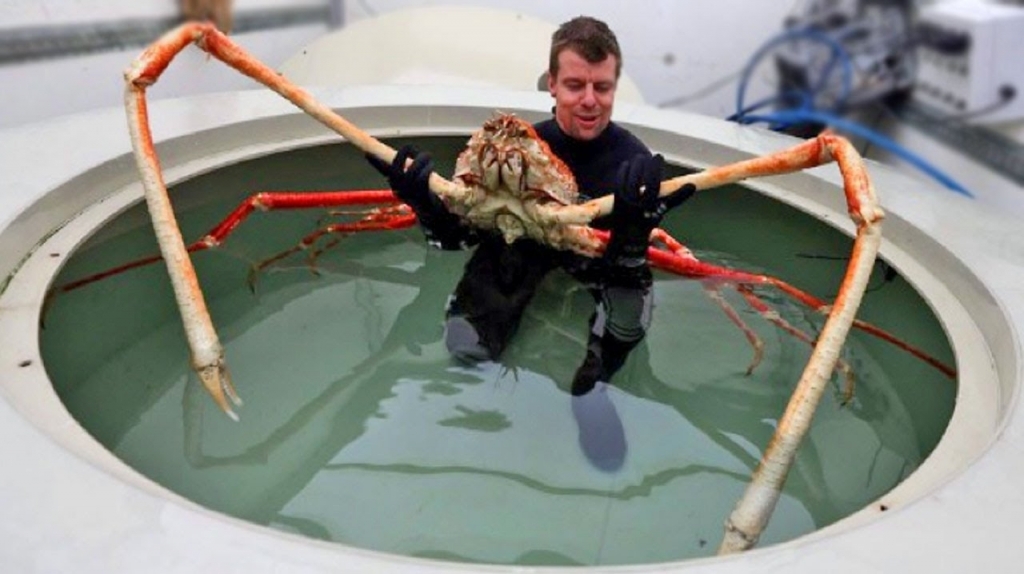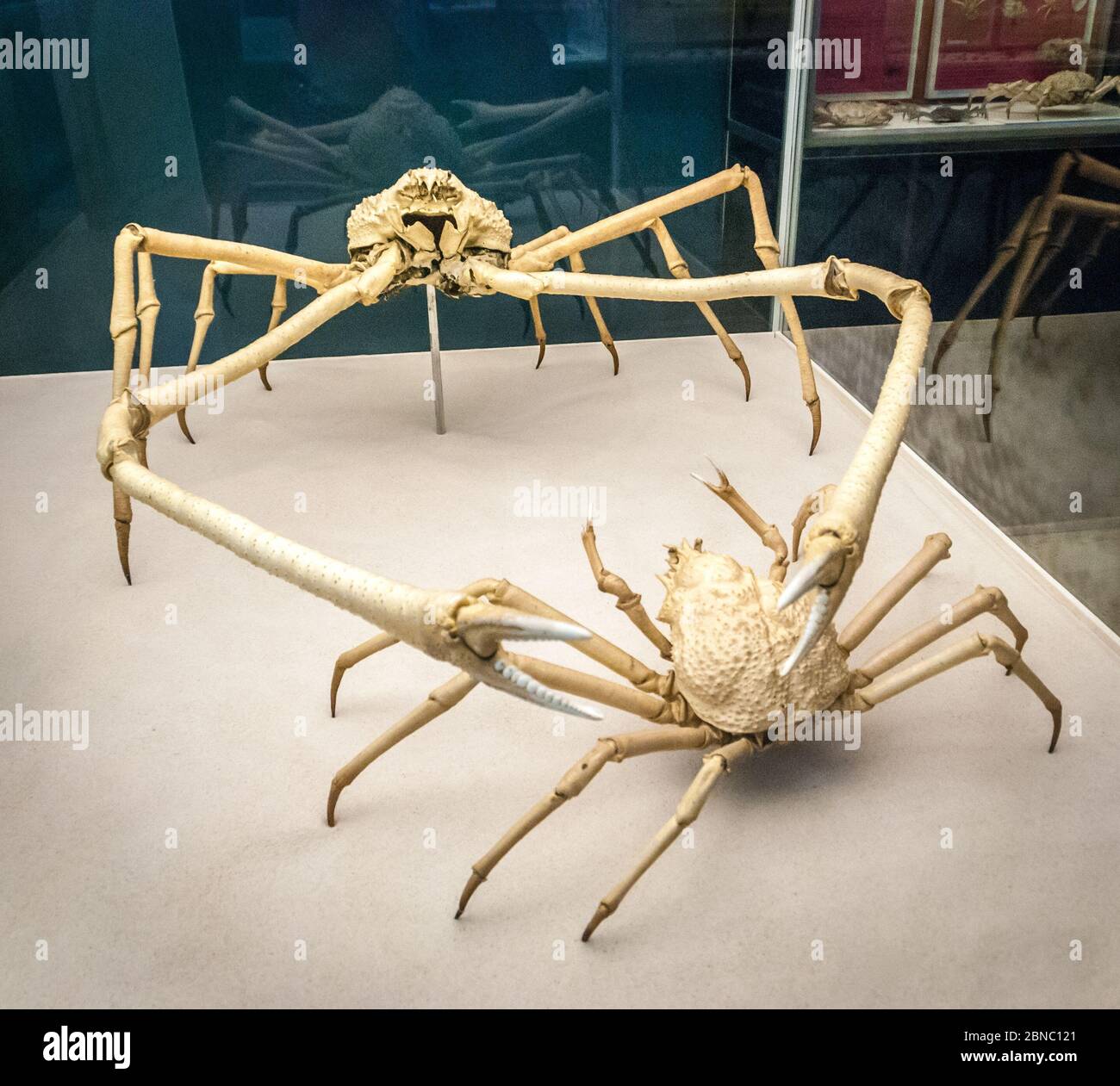A common theme in this blog is that the deeper the water, the stranger and spookier the specimens. Today we will dive (pun intended) into, in my personal opinion, one of the scariest looking creatures on this list. The Japanese spider crab will certainly pinch you back into reality as to how uncanny nature’s creations can be.

To say this crab is large is quite the understatement. When stretched out, it is 12 feet long from claw-to-claw, and 18 feet long from leg-to-leg. To put that into perspective, this crab is about as long as the width of a double-car driveway. Japanese spider crabs display a trait called deep sea gigantism, which is explains why creatures that live in deeper waters tend to be monstrously huge.

Surprisingly, Japanese spider crabs are commonly found around the coast of Japan. However, they can be found anywhere in the depths of the Pacific Ocean. They tend to occupy the cold, dark waters from about 300-2,000 feet deep. As most of the creatures on this list, you will likely not come into contact with one by accident.

Although you might expect these beasts to feast upon the souls of the unfortunate, their diet includes dead fish, invertebrates, and algae. They scour the bottom of the ocean floor to find small creatures to eat. They are known to use their claws to tear open the shells of mollusks and feast upon their innards. I will spare you of an image of this event, as it looks like it could be a scene out of John Carpenter’s The Thing.
Japanese spider crabs molt to grow. Molting is a process that most arthropods perform. They shed their old exoskeletons and emerge with a new, softer one that allows them to grow larger. You might be wondering, “Where do their exoskeletons go after they shed them?” Well, these absolutely horrifying skin suits are simply left on the ocean floor until they eventually decompose. They keep pretty well, so I suppose you could keep one as a souvenir… if that’s what floats your boat.

Japanese spider crabs are not currently categorized as an endangered species. However, their numbers are steadily dwindling. This is as a result of overfishing and habitat destruction. Although their meat is usually not sought after, they often accidentally are caught in fishing nets and die. Habitat loss occurs due to pollution, mining, and a multitude of other factors that degrade the environment enough to the point where the life that resides there can no longer be sustained.
Japan has made conservation efforts to protect these crabs from going extinct. They banned fishing for them during their mating system in efforts to increase their population.
With all of the Japanese spider crab’s unique traits and behaviors, they are rendered as one of the most interesting beings this earth has to offer. Although the sea creatures featured on this list are scary and unappealing to the eye, it is important to remember that they are simply animals just like us. It is important that we work together to preserve their habitats and protect their species.
These things seem terrifying! I had no idea that crabs could get to that size, but it does make me wonder how their meat tastes. I really appreciate the link about deep sea gigantism, as it is really interesting to learn about. The numerous puns and witty comments (like the one about “the souls of the unfortunate”) made this a really fun read! In general, how do you know about all of these creatures? What made you so interested in them?
I love all your clever puns! If I ever saw the Japanese spider crab I would simply disintegrate with horror. Even just looking at the picture sends a shiver through my whole body. These are fascinating animals and I really hope they are conserved even though they are quite terrifying. I would like to learn more about the huge animals that live in the deep sea. I didn’t know that the animals down there tended to be enormous but that’s really interesting.
I thought this was a really interesting read about something I have never heard of. I like how you mentioned deep-sea gigantism because I usually think of things like giant squid, not crabs. I love how you say to remember that these are simply animals and that they deserve to be protected just like any other, not matter how creepy they may look. Also, I wonder why the meat isn’t sought after, it seems like you could make some mean crab legs.
I love the way that you crafted this blog! Your commentary and perspective really helped me better visualize and understand these crabs beyond just their appearance in a 2D picture. For instance, your comment about how the crabs would span across a double-car driveway really helped me visualize exactly how big these crabs are. I love your writing style; the puns were spectacular and made this blog a really great read. On a more serious note, I really appreciate how you ended up on a message of conservation. Even though they may seem scary and terrifying, they are just crabs trying to live their own lives, and we need to be conscious of encroaching on their habitats as well — even if we don’t see them in our day-to-day lives.
When I saw the top image of the japanese spider crab, I thought it was a species that I had seen before in the Atlanta aquarium. My jaw dropped when I read about their immense size, and I realized that the crabs I saw were nowhere near that big. Not only is this creature fascinating, but your witty commentary throughout the post really enhanced the reading experience. Great blog theme!